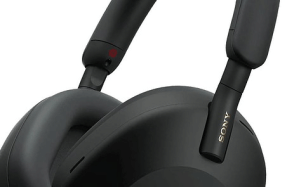YOUR COMPLETE GUIDE TO SSDs

Hard drives are fragile, mechanical devices, which are spinning up and slowing down the whole time you’re using your computer. The heads that read and write your data can neither be too close, nor too far from the disk surface as they reposition themselves. Should you jog or jolt your computer when the drive is in motion, it will try to secure the heads so they don’t crash into the disk surface and scratch your data out of existence.
When damage does occur, or sectors wear out, your drive can usually work around the problem by copying any data that’s in danger to a safer part of the disk. However, it can only do this so many times. As more and more of a disk is marked as unusable, its working capacity shrinks, and as the rescued chunks are separated from their neighbours, your computer slows down because the drive needs to hunt around for each piece of a file and reconstruct it in memory before you can use it.
Eventually, something will get missed, or a piece of data will be damaged beyond repair. The result could be the loss of a file, the disappearance of a precious photo, or a computer that simply won’t boot.
So, if your computer is starting to show its age, it may be time to consider replacing your drive. And, if you are replacing it, why not upgrade to a solid-state drive (SSD)?
We’ll start this feature by giving five reasons you should upgrade to an SSD today, before providing plain-English instructions on how to install one.
What you can do
• Open and save files up to 20 times faster than on a hard drive
• Make your laptop battery last longer than ever before
• Discover which SSD type is the right fit for your computer
• Create a Windows installation drive using a 8GB-plus USB stick
• Run Windows from an SSD by cloning your hard drive
• Re-use your old hard drives for backing up or storage
FIVE TOP REASONS WHY SSDs ARE BETTER
1 SSDs are much faster
Several factors determine the speed of your hard drive. The rate at which data transfers from the motherboard to the drive is one, but that rarely has the greatest impact. More important is the fact that traditional hard drives are physical objects with moving parts, comprising their own internal motherboards, platters (like vinyl records) for storing data, and heads for reading and writing it (see box right).
To better understand how all these components can affect a drive’s speed, consider the difference between thinking about moving something across the room, and actually shifting it. Physically relocating an object requires that you go to the object, pick it up, move it, find a place to put it down, put it down, then sit back again. Now,
You’re reading a preview, subscribe to read more.
Start your free 30 days





